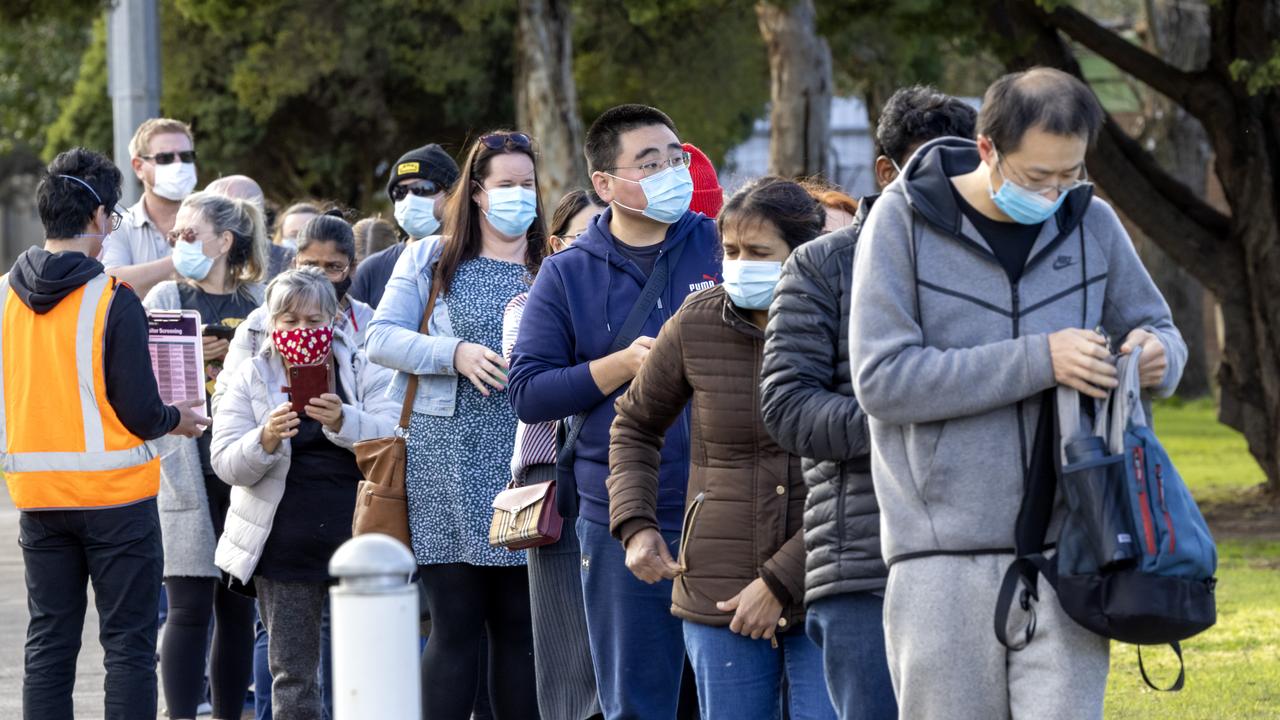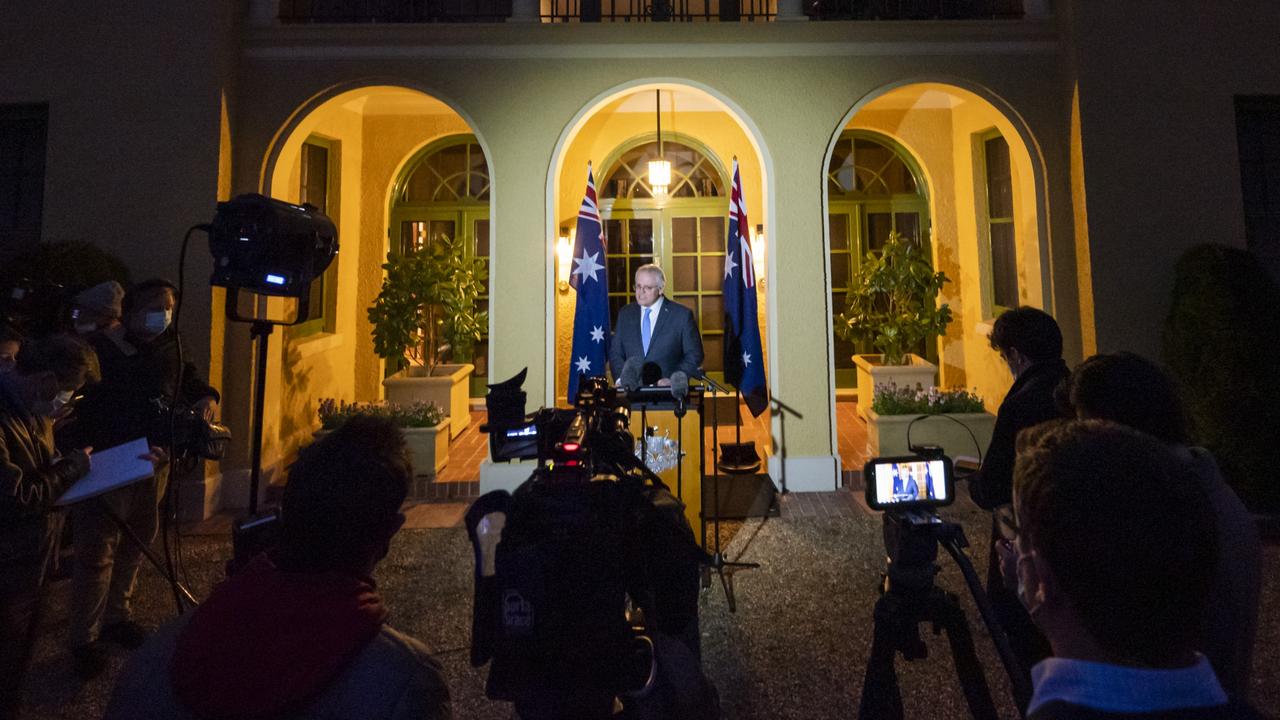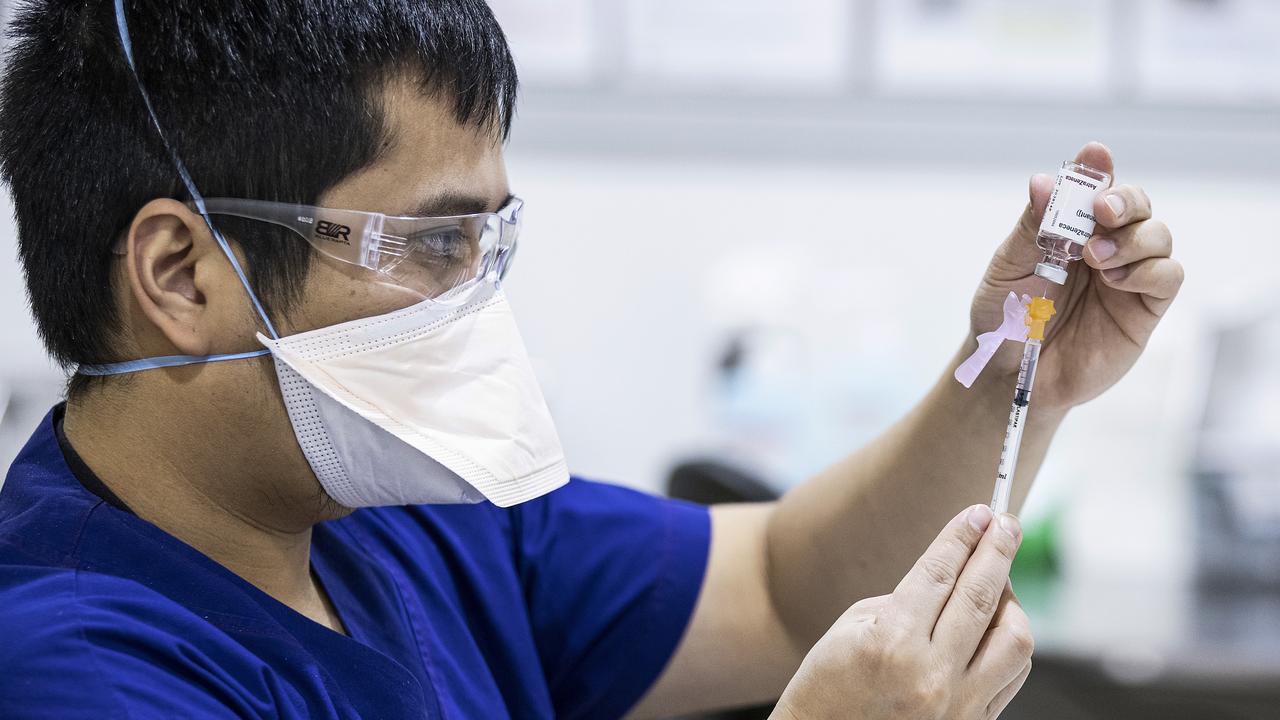How many days until Australia hits crucial covid vaccination targets and will be free from future lockdowns
With large parts of the country locked down once again, and targets set to open up again, one state is on track to get there first.
This year began with so much promise.
After several months of harsh restrictions, tough lockdowns, economic uncertainty, open-shut state borders, isolation, loneliness and a constant barrage of fear, 2021 looked set to be characterised by one thing: Hope.
Hope that Australia’s success in suppressing Covid-19 would last. Hope that the sudden disruptions to everyday life would be a thing of the past.
And hope that the rapid rollout of multiple vaccines would bring an end to the pandemic and set the country – and indeed the world – on a path to freedom.
But here we are in August, with just 19 per cent of the eligible population fully vaccinated, and hope that the end is in sight is all but gone and reaching lofty inoculation targets seems impossible.
It mightn’t feel like it, but freedom is closer than you might think.
Analysis of the rate of vaccination across Australia points to swift progress being made in reaching milestones that governments say are the key to opening back up and avoiding the kinds of city and statewide lockdowns that have strained our social fabric.
Read on to see when Australia – and your home state or territory – will be free.
Based on current figures, the ACT and Northern Territory would be the first to reach the 70 per cent vaccinated target, with NSW the first state to get there.
RELATED: Doctor puts AstraZeneca, Pfizer risks into perspective
The current state of the rollout
Much has been said and written about the shambolic effort by the federal government to get precious covid jabs in arms.
It was around this time in 2020 that Prime Minister Scott Morrison repeated his assurance to the public that Australia was at the front of the pack when it came to securing doses of the leading contenders.
Long story short, we weren’t remotely near the front of the pack and a combination of dire factors have seen us rank last in the developed world – 38th out of the 38 OECD nations.
Vaccinating against Covid-19 is the only way for Australians to get their normal lives back, but as a nation we’re struggling.
News.com.au’s Our Best Shot campaign answers your questions about the Covid-19 vaccine rollout.
It’s fair to say the vaccine rollout has confused Australians. We’ll cut through the spin and give you clear information so you can make an informed decision.
RELATED: Should you get a Covid-19 vaccination?
A number of original targets have been missed and abandoned, replaced by less ambitious goals, many of which were also not reached.
Aged care workers, part of the very first priority group, remain overwhelmingly unprotected.
There’s confusion over who is now eligible and how they can go about getting a jab quickly and easily.
Levels of stock remain severely constrained, especially of the Pfizer vaccine.
And vaccine hesitancy, at least towards the AstraZeneca shot, is extremely high thanks to confusion and concern sparked by shockingly poor communication.
As it stands, 12.3 million total doses of covid vaccinations have been administered across the country.
That equates to 19.04 per cent of people aged 16 and above having received both doses and 40.7 per cent receiving one dose so far.
RELATED: Grieving husband urges people to get vaccinated after losing wife

On Friday night, Mr Morrison announced a new road map to freedom, confirming 70 per cent of the eligible population will need to be fully vaccinated before tough restrictions can begin to be eased.
And a near total end to the gruelling cycle of lockdowns will need 80 per cent of people to be double jabbed.
Both of those targets must be met at a national and state level, in what the PM described as a “two-key process”.
No date targets have been agreed to by the national cabinet, but Mr Morrison said he’s hopeful of the 70 per cent goal being reached by the end of the year.
“There will certainly be the supply and the distribution and the opportunity to do that,” he said. “But whether that is achieved is up to all of us.”

How long until we get there
Perhaps learning the lesson of setting highly ambitious goals that can’t be met, Mr Morrison’s aim of hitting a 70 per cent fully vaccinated position by the time we ring in a New Year is a little conservative.
A look at the current trajectory of the rollout indicates Australia will hit that target sooner, and in time for a fully free Christmas.
The website covidlive.com.au has been collating and tracking various datasets related to the Covid-19 pandemic, from active cases to sources of outbreaks.
It has also kept a close eye on the status of the vaccine rollout at both a national and state and territory level.
Based on a seven-day average of total doses administered in a 24-hour window, from February 22 to present, it has also calculated the number of days until Australia hits the 70 per cent and 80 per cent targets.
Nationally, 70 per cent of the eligible adult population will be fully vaccinated in 130 days, it’s estimated, which is December 10.
And eight-in-ten people will have received both doses in 156 days, according to covidlive.com.au, which is January 5 next year.
RELATED: Former anti-vaxxer reveals why she got the Covid vaccine
The path to freedom
The new plan announced by Mr Morrison on Friday outlines a three-phase response to the covid pandemic, including benchmarks for vaccinating the population.
It was agreed to – in principle – by state and territory leaders at that day’s meeting of the national cabinet.
Phase A, which we’re currently in, is about suppressing the virus – swiftly responding to outbreaks with harsh measures, including locking down cities and states.
Phase B, which the country will transition to when 70 per cent of adults are vaccinated, will see severe illness and deaths minimised, relieving pressure on the hospital system.
Authorities warn lockdowns may still occur in this phase, but they’ll be far less common than what we’re used to.
In something of an incentive to get the jab, the PM flagged an easing of restrictions for those in the 70 per cent group, saying “if you’re vaccinated, you present less of a public health risk”.
He added: “You are less likely to get the virus. You are less likely to transmit it.”
What kinds of freedoms the fully vaccinated might enjoy hasn’t been detailed, nor how it would be policed.

Based on the current rate of vaccine delivery, this is when the 70 per cent target is forecast to be reached for Aussies aged 16 and older.
Nationally: 139 days (December 10)
New South Wales: 80 days (October 21)
Victoria: 107 days (November 17)
Queensland: 130 days (December 10)
Australian Capital Territory: 63 days (October 4)
South Australia: 102 days (November 12)
Western Australia: 112 days (November 22)
Northern Territory: 65 days (October 6)
Tasmania: 95 days (November 5)
Sources: covidlive.com.au, covidbaseau.com

Phase C is where freedom is really achieved, with an 80 per cent fully vaccinated goal seeing an end to broad lockdowns and other perks like exemptions for domestic travel.
Only highly targeted lockdowns would be imposed in the event of an outbreak, such as strict measures for vulnerable populations.
It’s in the final phase that covid would be treated like any other infectious illness, such as influenza.

Based on the current rate of vaccine delivery, this is when the 80 per cent target is forecast to be reached for Aussies aged 16 and older.
Nationally: 156 days (January 5)
New South Wales: 100 days (November 10)
Victoria: 134 days (December 14)
Queensland: 161 days (January 10)
Australian Capital Territory: 82 days (October 23)
South Australia: 128 days (December 8)
Western Australia: 138 days (December 18)
Northern Territory: 86 days (October 27)
Tasmania: 123 days (December 3)
Sources: covidlive.com.au, covidbaseau.com

How we get there quicker
Those dates are based on rolling averages of the delivery of vaccines so far.
Boosted levels of supply, more rapid delivery mechanisms and a greater uptake from the population can see targets reached much sooner.
For example, health authorities in NSW believe an uptick in vaccines administered – 82,000 doses were given in the past 24 hours – and a significant lift in supply of the Pfizer jab will see the 70 per cent goal hit in early September.
That’s just five weeks away. If that scenario eventuates, the current lockdown will end and broader restrictions will begin to ease.
RELATED: Sydney walk-in clinics let you have AstraZeneca Covid-19 vaccines without making an appointment
A return of some sense of normality could come sooner if vaccination rates increase, it was flagged yesterday.
“Once you get to 50 per cent vaccination, 60 per cent, 70 per cent, that triggers more freedoms,” NSW Premier Gladys Berejiklian said on Sunday. “We can turn this around in four weeks.”
The lockdown is due to end on August 28 but with daily new cases continuing to increase, it’s likely to be extended.
“We have the month of August to get the vaccination rates as high as possible. Let August be the month where we break records with the vaccination.”
The message is, the quicker you get jabbed, the sooner phases B and C can be met.




